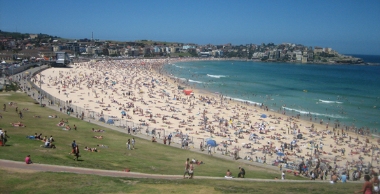Why does inflammation get such a bad wrap?
Inflammation. At its worst, it can stop you in your tracks. But if your tendency is to reach for the Voltaren at the first slight twinge or sign of inflammation, you might like to consider what purpose inflammation actually serves…
And you also might like to consider that Volaren, Ibiprofen and other Non Steroidal Anti-Inflammatory Drugs (NSAIDs) can limit the benefits you gain from training!!
Sometimes it’s tempting for runners with a niggling injury to take anti-inflammatories to get them through their key long runs leading up to a race, but studies have shown that this can be counter-productive.
What Role Does Inflammation Play?
Inflammation is a protective mechanism your body uses to remove harmful stimuli and start the healing process. After a hard workout, specific cells are activated to increase blood flow to the muscles used in the workout. This increased blood flow also occurs in the initial stages of an acute injury. It produces swelling and stimulates the nerves that cause pain.
Inflammation is the beginning of the healing process, and it’s super important for recovering not only from injury, but from normal bouts of training as well. Without inflammation, your recovery from each bout of exercise (or from injury) would be much slower.
But what about R.I.C.E? Isn’t the idea to reduce inflammation?
Good point. The standard procedure for injuries which provoke the inflammatory response, such as a sprained ankle, is Rest, Ice Compression and Elevation. The R.I.C.E protocol is designed to REDUCE inflammation, so if inflammation isn’t bad, and it’s the body’s natural response to injury, why do we want to reduce it?
Firstly, we need to understand that the inflammatory response is non-specific. Incredible as our bodies are, we don’t seem to have evolved to be able to differentiate between the response needed to cope with a potentially deadly pathogen such as a bacteria or virus entering the body, and the response needed to help a sprained ankle to heal. The overriding function of the body is to keep itself alive. This takes precedence over all else. If a massive inflammatory response is required to neutralise potentially deadly pathogens, from the point of view of survival, it’s of little consequence that your ankle might lose some functionality due to inflammatory overkill after injury. Better to have slight loss of function of the ankle, than be dead.
One of the things inflammation does is put up a barrier around the area of infection or injury– whether that is around a sprained ankle, or around an area where a pathogen has set up house inside the body. This slows the passage of pathogens or toxic products into the surrounding healthy tissue. In the case of a sprained ankle, too much inflammation can actually inhibit the repair of the tissue. Too much swelling in the injured area might make it difficult for blood to diffuse into the cells, resulting in a lack of oxygen and further damage, so reducing the inflammation makes sense. One of the other things ice will do is slow the metabolic rate of the cells in the area, which temporarily decreases the cell’s requirements for oxygen.
Why exercise produces inflammation
When you run (or perform any other form of exercise) you create small micro tears in your muscles. The higher the intensity of the workout, the more forcefully you are contracting your muscles, and therefore the more damage you cause.
The micro-tears cause your body to set up an inflammatory response. Substances such as blood, oxygen and nutrients are shunted to the damaged area for the healing process to begin. This micro damage is not enough for the body to over-do the inflammatory response, but it can be enough to cause pain and discomfort.
When you should NOT take anti-inflammatories, and why.
If you’re interested in getting your body into the best shape possible, you shouldn’t take NSAIDs in the following circumstances:
- To reduce the pain of a current injury to get you through a long run
- During a race
- Prophylactically – that is to prevent the anticipated pain of a sporting endeavour, or to prevent injury
NSAIDs can reduce the training effect
If you’ve got a niggling ITB, or a bout of bursitis for example, something that’s not too bad, but there all the same, it’s very tempting to pop a pill to get you through your scheduled long runs. You fear not getting in the mileage you’d intended will affect you poorly on race day. And it might…
But washing down a couple of anti-inflammatories with your pre-run hydration isnt’ the answer. A 2010 study by Japanese scientists showed that whilst anti-inflammatory drugs will indeed facilitate a longer distance run, the taking of the drug cancelled out the training effect that could be achieved from the longer distance. If you run with NSAIDs coursing through your veins, the training adaptation you could expect from that run will be diminished.
In other words, by taking the drug to enable you to run further, your body is not able to make use of the longer distance you run. You’re wasting your time. You’d be better off running within your pain threshold and gaining the training benefits from that. A longer run on NSAIDs will not see you get as fit as if you were running without NSAIDs, so you may as well run for less time and enjoy the training benefit.
Taking NSAIDS for long periods of time can have adverse effects on your gastrointestinal and cardiovascular system. These adverse effects become more pronounced with longer duration of use. Taking NSAIDS before physical activity can mask pain and cause an injury to get worse, or mask the pain of a developing injury. Anti-inflammatories may also impede the synthesis of collagen, that gives strength to tissue. Some of the chemical substances naturally occurring in the body which NSAIDS inhibit are important in the response and adaptation of muscles and other connective tissue to loads placed upon them. Taking NSAIDS can reduce the strength gains from training.
Taking NSAIDs may not reduce your perception of pain
Using NSAIDS prior to a race to prevent the pain of racing has been shown to be ineffective. This study on athletes competing in a 160k endurance run showed the ibuprofen use did not alter muscle damage or soreness. That’s right, taking anti-inflammatory drugs before the race made no difference to the athlete’s perception of pain. The perceived exertion of ibuprofen users and non-users was very similar. On the Borg scale, the control group rated their exertion slightly lower than the anti-inflammatory group (14.5 vs 14.6), and interestingly, and interestingly, Ibiprofen use was related to increased endotoxemia and inflammation.
When is it good to take anti-inflammatory drugs?
During the initial stages of an acute injury (like a muscle strain, sprained ankle, or sudden onset of an inflammatory conditions such as tendonitis or bursitis), NSAIDS are likely to facilitate healing. Taking NSAIDS for the first 2-3 days is appropriate, but after that, you may be better off letting the body’s own natural healing take over.
There are of course other circumstances when NSAIDs are necessary, but that’s best left up to your medical practitioner to decide










 Most of us would like to be able to run just that little bit faster. Improve on that 10k PB, even if it’s only by the smallest amount. Or maybe you’re trying to maintain the times you did when you were a bit younger? It’s not so easy once you hit 40 is it? Whatever your situation, there are plenty of simple things you can do to shave more than just a few seconds off your time. Here are six of them.
Most of us would like to be able to run just that little bit faster. Improve on that 10k PB, even if it’s only by the smallest amount. Or maybe you’re trying to maintain the times you did when you were a bit younger? It’s not so easy once you hit 40 is it? Whatever your situation, there are plenty of simple things you can do to shave more than just a few seconds off your time. Here are six of them.